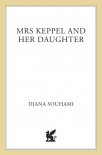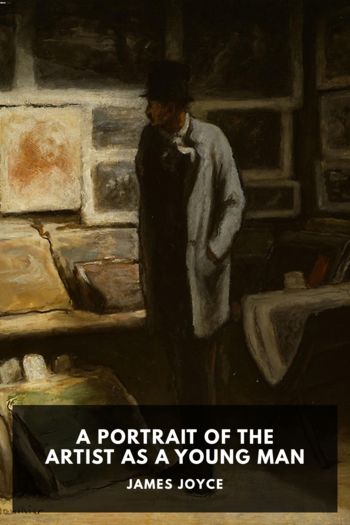Mrs. Keppel and Her Daughter, Diana Souhami [the ebook reader TXT] 📗

- Author: Diana Souhami
Book online «Mrs. Keppel and Her Daughter, Diana Souhami [the ebook reader TXT] 📗». Author Diana Souhami
Vita was in the clear. Harold’s doctor forbade him to have sex with her, even protected sex, for six months. He was disappointed. There was a holiday coming up and ‘it is a part of holiday isn’t it?’ By 20 April 1918 there would be no risk and the doctor was ‘frightfully opty about it not happening again’.
Vita had pause for thought. Married four years, she had two children – Nigel was born in 1917 (a second son had been born dead in 1915) – Harold was ‘a sunny harbour’, their relationship ‘open, frank, certain’. She was pleased to be a mother, he was even more pleased to be a father. ‘We were in fact,’ she wrote in 1920, ‘a nice young couple to ask out to dinner.’
Her desire for women was muted by marriage, she had no lovers, her life focused on writing, her house, garden, husband, family. Harold for his part had not told her about his sexual encounters with good-looking intelligent young men of his own class. They were boffes de gaîté, ‘a jolly vice’ and held no promise of commitment or obligation. But he must have felt some compulsion of desire for they were against the law. He was ambitious, a diplomat and not a man lightly to put at risk his career, civil liberty, marriage and social position. The ruin of Oscar Wilde in 1895 showed the destructive power of the law. Harold told Vita she was the only one he loved. He cherished his domestic life and hoped for a daughter to complete the unit. Neither he nor Vita wanted an airless marriage, they were independent of each other by circumstance and choice. But on the Knebworth weekend when he caught the clap, whatever the tactful disposition of bedrooms and brass-framed names on the doors, Vita was in a room in the same house.
At the beginning of April 1918 Violet wrote again to Vita. She asked if she might come and stay at Long Barn. She hoped to travel by train to the Slade some mornings but was afraid of air raids in London after nightfall. Vita wanted to work but felt she could not refuse. Violet arrived on 13 April with an architect friend, ‘Bear’ Warre. Harold returned to town.
Five days later on 18 April, two days before the six-month curfew on marital sex was through, Vita put on trousers of the sort issued to Land Army women for the war effort. She had bought them for gardening. Their effect prompted a symbolic liberation on a par with long hair for poets, earrings for gay waiters, cockatoo hairdos for punks,
in the unaccustomed freedom of breeches and gaiters I went into wild spirits … in the midst of my exuberance I knew that all the old undercurrent had come back stronger than ever and that my old domination over her had never been diminished.
Breeches, gaiters, undercurrents and domination had their way. Violet and she dined alone, talked until two in the morning, then kissed in the dark. Violet wore a red velvet dress ‘exactly the colour of a red rose’. Her skin was white, her hair tawny, she was, Vita wrote, ‘the most seductive being’. Vita confessed her ‘duality’, her gentle ‘feminine’ feelings for Harold, her rougher passionate feelings toward women. Violet talked of how she had loved Vita since childhood. She lay on the sofa, took Vita’s hands, parted her fingers and counted the points of why she loved her. ‘I hadn’t dreamt of such an art of love…’ Vita wrote. ‘I was infinitely troubled by the softness of her touch and the murmur of her lovely voice.’
In her account of their affair, written in 1920, Vita portrayed Violet, that spring day in 1918, as the experienced seducer, the wily courtesan, as knowing as Mrs Keppel or Louise de Kéroualle – Charles II’s mistress – ‘infinitely clever’, ‘adept at concealment’, determined to conquer. ‘I might have been a boy of eighteen and she a woman of thirty-five’. In fact Violet was twenty-four, two years younger than Vita, watched over by her mother and with no particular experience of sex or life. ‘I am young, headstrong, exceptionally passionate. I am in love for the first time in my life,’ she wrote to Vita that year. It was Vita who had loved Rosamund Grosvenor, married Harold, published poems, given birth to three children.
Violet’s love for Vita was the unequivocal focus of her life. Her perception of it had not changed from when she declared it in October 1910 before leaving for Ceylon. But she had no pragmatic plan for life, or idea of how to channel this love. When Vita married, she was hurt, made scathing comments, but did nothing to intrude. To please her mother she ‘came out’ into society but scorned its hypocrisies and double standards. The war frightened her but beyond a surface display of patriotism she took no interest in it. She flirted with its heroes to show her mother that she could, if she chose, have a man, but backed off if marriage loomed.
Mrs Keppel was not a role model for candid relationship. She put a premium on seduction, elided duplicity and discretion and did not seem to value her own marriage in an intrinsic way. Her daughters when small were neglected guests at her Court. Violet fantasized that the King was her father. Kingy was a wonderful man not least because mother was his heartfelt queen. A mother so gilded could not be courtesan to a rich, fat, bronchial philanderer overly fond of food and horses.
For Vita sex with Violet was a revelation. ‘How eventful a day!’ she wrote





Comments (0)